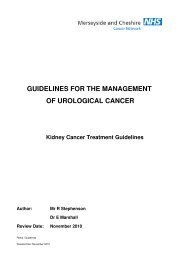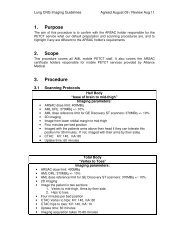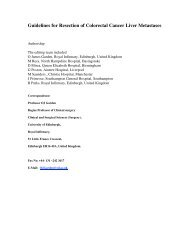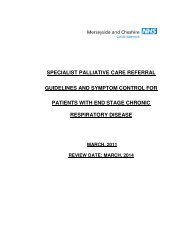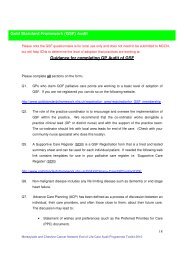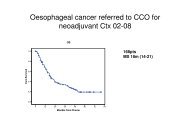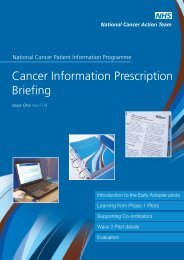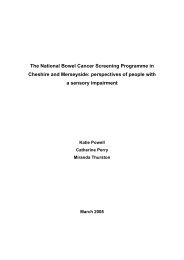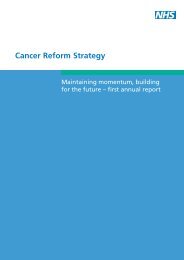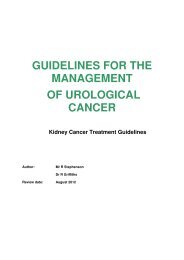Cancer Reform Strategy - NHS Cancer Screening Programmes
Cancer Reform Strategy - NHS Cancer Screening Programmes
Cancer Reform Strategy - NHS Cancer Screening Programmes
- No tags were found...
Create successful ePaper yourself
Turn your PDF publications into a flip-book with our unique Google optimized e-Paper software.
CHAPTER 7: DELIVERING CARE IN THE MOST APPROPRIATE SETTING 99●●●Patients should be on defined inpatientpathways based on their tumour type andthe reason for admission;Clinical decisions should be made on a dailybasis to promote proactive casemanagement; andEmergency admission should be theexception not the norm.7.35 By applying these principles inappropriateadmissions have been averted and lengths ofstay have been reduced. Significant capacity hasbeen released.7.36 Much can be learned from these projects.Implementing this best practice will require jointaction on the part of the whole local healthcommunity. In summary, the main lessons fromall of these sources are set out in boxes 37 to 39below:Box 37: Themes emerging from the <strong>Cancer</strong> Services Collaborative ImprovementPartnership pilot sites on inpatient careServices should provide:●●●●●●●Better patient education about the likely symptoms, risks and complications associated withtheir treatment and the importance of seeking early medical advice for complications;More proactive management and support of patients outside the hospital, such as phoningpatients on days when their white blood cell count is likely to be low and they are likely tofeel particularly unwell;Rapid assessments of patients admitted as an emergency by an appropriate cancer specialistto avoid unnecessary admissions or to minimise the length of hospital stay;Preadmission assessment of patients’ suitability for surgery and planning for discharge;Rapid systems for decision-making on the ward. Consultants should undertake daily wardrounds and make prompt decisions about the patient’s care and treatment, in particular onwhen the patient can be discharged;Clear protocols agreed for cancer patients who are staying on non-cancer wards.A designated contact, who is responsible for the patient’s care should be identified; andGood links with social care services on discharge.Box 38: Reducing elective breast surgery lengths of stay●●●●Between 1997/98 and 2005/06 the total number of surgical procedures for breast cancer(mastectomy or breast conserving operations) increased by 35%. However bed days onlyincreased by 3% reflecting increased efficiency and shorter lengths of stay;However average lengths of stay remain relatively long both for mastectomy (5-6 days) andbreast conserving surgery (2.8 days), with wide variations between trusts;Sandwell and West Birmingham Hospitals, one of the <strong>Cancer</strong> Services Collaborative pilotsites, have successfully reduced their length of stay following breast cancer surgery from sixdays to 23 hours; andThis was achieved by small changes in procedure following the operation and by carefulplanning before and during the hospital stay to avoid delays. Both hospital staff and patientshave a clear idea before the operation of when the patient is likely to be discharged.




